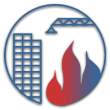 |
 |
 |
 |
|||||||
|
|
||||||||||
 |
 |
 |
 |
 |
 |
 |
 |
|||
 |
 |
 |
 |
|||||||
|
|
||||||||||
 |
 |
 |
 |
 |
 |
 |
 |
|||
OverviewThe Computer Integrated Building Processes Group (CIBP) at NIST promotes advancements in the capabilities of the U.S. building industry by developing measurement science, methods, protocols and testbeds related to information, communication, sensing and automation technologies and improved work processes. Research topics include: building information modeling and interoperability; building controls and emergency management; construction productivity; product data standards and project data standards, e.g., IFCs and CIS/2; intelligent and automated construction job site; integrated and automated project delivery; real-time project control; semantic modeling, systems integration, validation testing and conformance testing. The group works with industry and the research community to apply research results to improving the design, construction and operation of the built environment.
Employment Opportunities
For more information contact: Mark Palmer |
Project Information
Some of the projects are part of the CONSIAT: Construction Integration and Automation Technology program which is part of the strategic priority area Measurement Science for Breakthrough Improvements in Construction Productivity. The other BFRL groups that participate in CONSIAT are the Construction Metrology and Automation Group and the Office of Applied Economics. The other projects from those groups that are part of CONSIAT are: |
|
| ||||||||
Visualization ResearchThe Virtual Reality Modeling Language (VRML) is used for the visual representation and simulation of construction and building related models, activities, and processes. A VRML plugin detector has been developed to check if your web browser is properly configured to be able to view VRML models.If you're interested in your own local copy of most of the VRML models below, then download this free zip file to your computer. Unzipping the file will create a directory nist_cic_vrml. Use a web browser to load the file index.html in that directory to find the VRML models. | |||
Structural Steel Product Models
![[Click for details]](https://webarchive.library.unt.edu/eot2008/20090116184231im_/http://cic.nist.gov/vrml/cis/ecs1_nonem.jpg)
CIS/2, IFC, VRML, and X3D research and the CIS/2 to VRML and IFC Translator |
Construction Site
![[Click for details]](https://webarchive.library.unt.edu/eot2008/20090116184231im_/http://cic.nist.gov/vrml/ecs/photos/ecs_build013b.jpg)
NIST Fire Research Facility Emissions Control System (ECS) showing a simulation of the construction process |
Construction Equipment
![[Click for details]](https://webarchive.library.unt.edu/eot2008/20090116184231im_/http://cic.nist.gov/vrml/exc/excanim2a_md.jpg)
User-controlled excavator, tower crane, and dumptruck |
Virtual Cybernetic Building Testbed
![[Click for details]](https://webarchive.library.unt.edu/eot2008/20090116184231im_/http://cic.nist.gov/vrml/vcbt/vcbt.jpg)
Simulation of the Virtual Cybernetic Building Testbed |
By selecting many of the links above, you will be leaving NIST webspace. We have provided these links to other web sites because they may have information that would be of interest to you. No inferences should be drawn on account of other sites being referenced, or not, from this page. There may be other web sites that are more appropriate for your purpose. NIST does not necessarily endorse the views expressed, or concur with the facts presented on these sites. Further, NIST does not endorse any commercial products that may be mentioned on these sites.
|
Privacy Statement / Security Notice |
Disclaimer |
FOIA |
Inquiries
NIST is an agency of the U.S. Department of Commerce
Date created: June 15, 1996 |

|